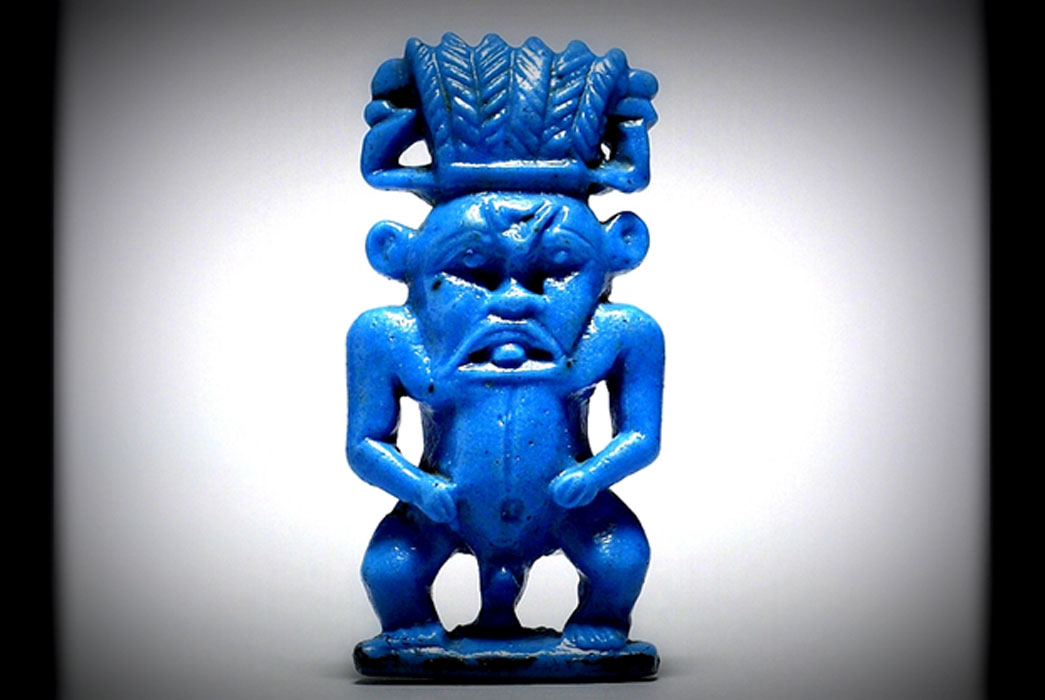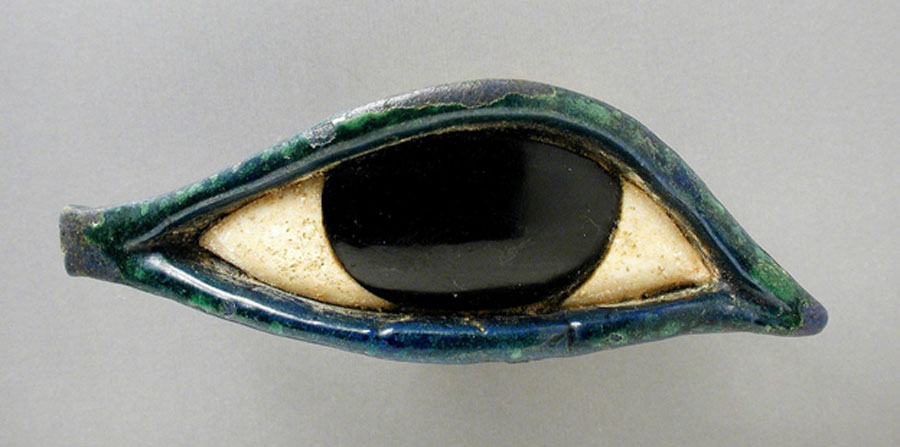
Think Egypt Think Magic: The Power of Heka in the Life of King and Commoner – Part I
Ancient Egypt was renowned and respected for her wisdom, art and architecture by all those who came into contact with her. What also caught the attention of these admirers was the practice of magic that was hailed as a life-giver and sustainer; and also vilified in some quarters as a dark art. Regardless of the varied assessments by the outside world, the lives of devout Egyptians were inextricably intertwined with magic.

An eye made of glass and obsidian from a coffin belonging to the Late Period (724 - 333 BC). As an amulet, the popular Wedjat eye symbolized health and protection. (Los Angeles County Museum of Art)
Heralding the Power of Heka
Titus Flavius Clemens, better known as Clement of Alexandria declared in the early third century AD that: “Egypt was the mother of magicians”. Spanning several millennia, magic in ancient Egypt was a potent and inalienable force that operated in every strata of social life and dictated the daily lives of its citizens - embracing religion, politics, birth and death.
To many ancient peoples, magic was deeply entwined with science and religion, as it addressed concerns such as health and wellbeing, protection from evil, and revenge. In ancient Egypt, Mesopotamia, Greece and Rome, symbolic words, powerful objects, or esoteric rituals were used to fulfill desires through supernatural means.
Up until the Roman period, Heka (HkA) was the ancient Egyptian word for magic; this was later replaced by the Coptic word Hik (xik), a term that corresponded with the Greek word magia. In fact, there is no single, clear-cut definition of Heka; so it can be translated as a force of nature that can also assimilate the attributes of a divine being in human form. The theological manifestation of Heka is also present in tomb and temple representations as early as the Old Kingdom. In the 5th Dynasty funerary temple of the king Sahure, Heka heads a procession of nome (regional) deities bearing offerings to the king. In late period documents and on the walls of the Ptolemaic temples of Dendera, Edfu, Kom Ombos and Philae, Heka appears as one of the 14 kas of the sun-god Re, an idea that was already present in the Middle Kingdom Coffin Texts.
Further, an ancient explanation for Heka reads: “the one who consecrates imagery”. Funerary spell 261 titled ‘To become the god Heka’ from a Middle Kingdom sarcophagus throws light on the subject: “I am he whom the Lord of all made before duality had yet come into being… I am he who gave life to the Ennead of gods… Because to me belonged the universe before you gods had come into being. You have come afterwards because I am Heka.” The god Heka appears amidst the crew of the solar barque, depicted as a bearded man wearing the nemes headdress; and also as a hieroglyph since 1000 BC.

Magic Wand of hippopotamus ivory (Middle Kingdom-Second Intermediate) depicting a procession of deities. The curve of this wand follows that of the hippopotamus tusk from which it was made, but its flat form is reminiscent of the curved throwing sticks used to catch fowl. Powerful protective deities, such as Taweret and Bes, are depicted together with protective uraeus serpents and other mythical creatures. Many of the figures brandish knives to dispel evil spirits. (Walters Art Museum)
Essence of Ma’at and Magic
For the Ancient Egyptians magic as Heka is a neutral, amoral creative force that is not opposed to religion but which animates it. Daily temple rituals across the land re-enacted the primordial creation myth that spoke of the ‘first time’ - episodes that led to the birth of the Egyptian cosmos - an act that invoked and unleashed the unbridled power of Su, Sia, and Heka; as they separated heaven and earth.




